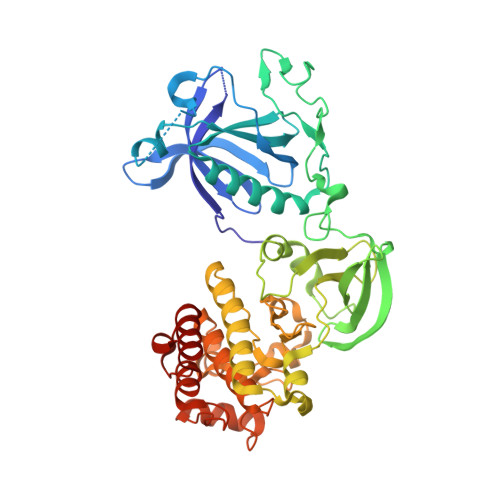Autoinhibition of Bruton's tyrosine kinase (Btk) and activation by soluble inositol hexakisphosphate.
Wang, Q., Vogan, E.M., Nocka, L.M., Rosen, C.E., Zorn, J.A., Harrison, S.C., Kuriyan, J.(2015) Elife 4
- PubMed: 25699547
- DOI: https://doi.org/10.7554/eLife.06074
- Primary Citation of Related Structures:
4XI2, 4Y93, 4Y94, 4Y95 - PubMed Abstract:
Bruton's tyrosine kinase (Btk), a Tec-family tyrosine kinase, is essential for B-cell function. We present crystallographic and biochemical analyses of Btk, which together reveal molecular details of its autoinhibition and activation. Autoinhibited Btk adopts a compact conformation like that of inactive c-Src and c-Abl. A lipid-binding PH-TH module, unique to Tec kinases, acts in conjunction with the SH2 and SH3 domains to stabilize the inactive conformation. In addition to the expected activation of Btk by membranes containing phosphatidylinositol triphosphate (PIP3), we found that inositol hexakisphosphate (IP6), a soluble signaling molecule found in both animal and plant cells, also activates Btk. This activation is a consequence of a transient PH-TH dimerization induced by IP6, which promotes transphosphorylation of the kinase domains. Sequence comparisons with other Tec-family kinases suggest that activation by IP6 is unique to Btk.
Organizational Affiliation:
Department of Molecular and Cell Biology, Howard Hughes Medical Institute, University of California, Berkeley, Berkeley, United States.

















